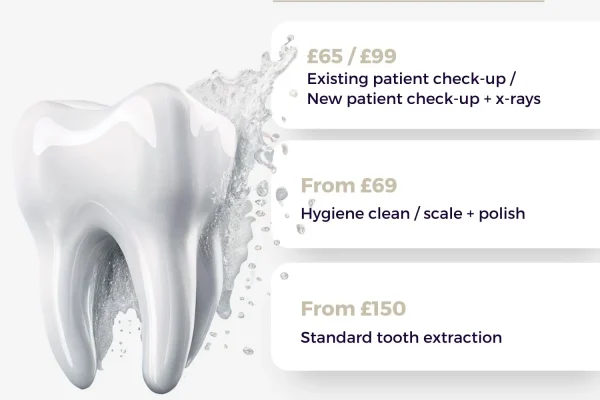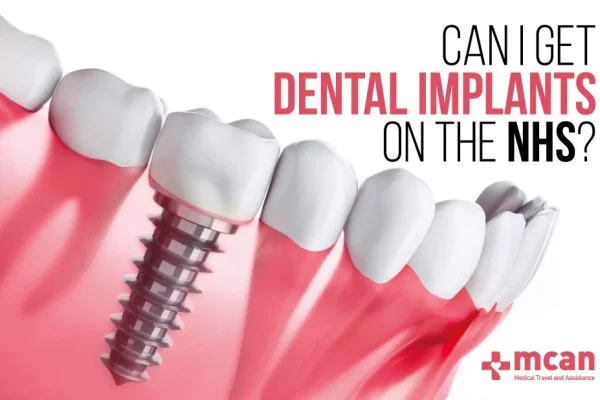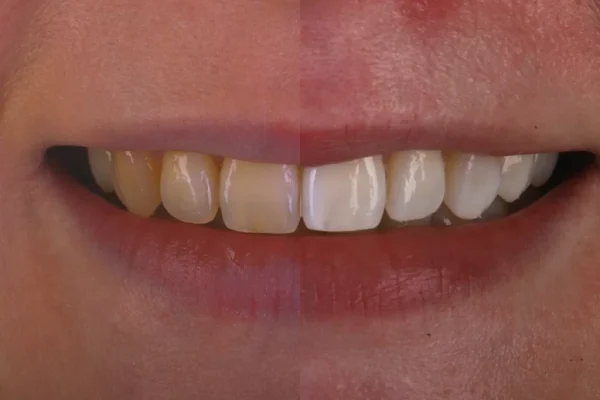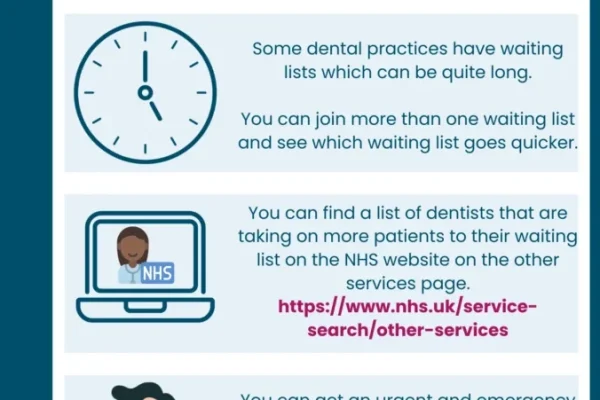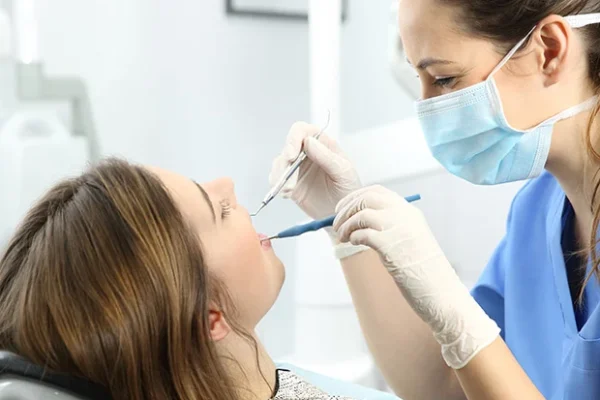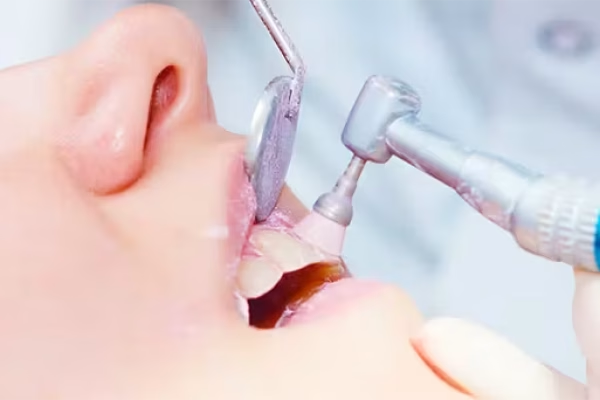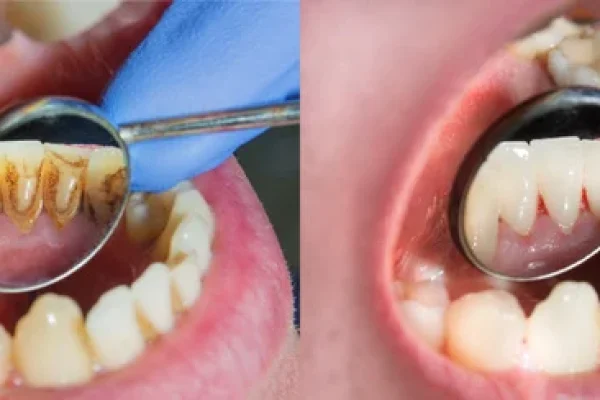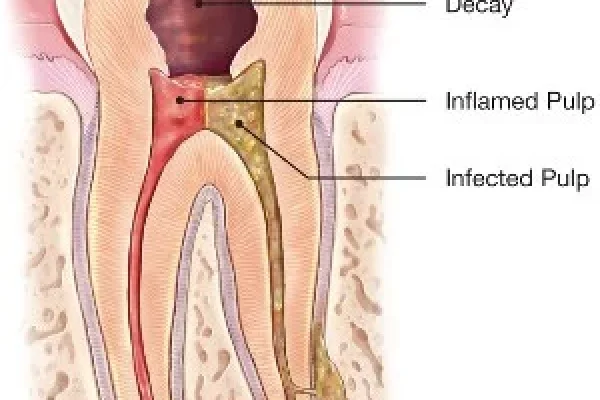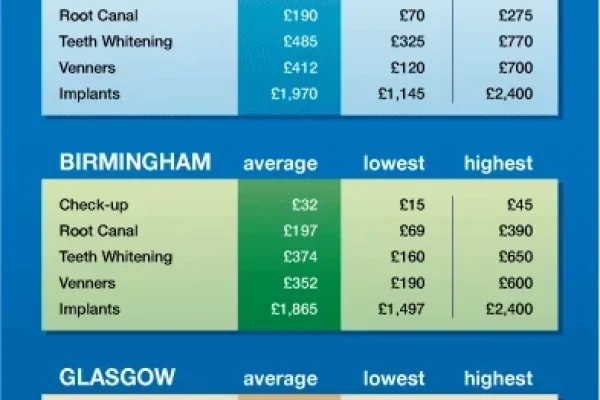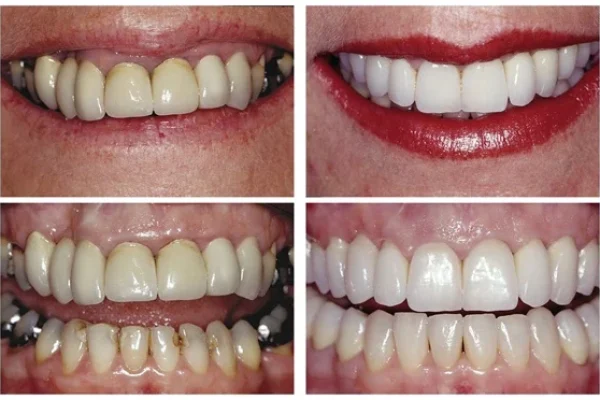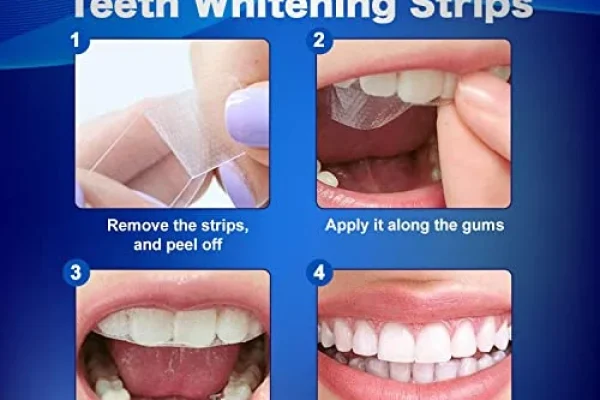
Key Takeaways
-
- The cost of a filling varies significantly based on material, size, location, dentist, and geography.
-
- Common materials like amalgam are generally cheaper than composite resin.
-
- Gold and porcelain/ceramic fillings are significantly more expensive, often requiring laboratory work.
-
- Dental insurance typically covers a large percentage (often 80%) of basic filling costs after the deductible is met.
-
- Costs are dramatically different without insurance, reflecting the full fee.
-
- Location matters – prices differ between countries (e.g., UK NHS vs. Private vs. USA), states, and cities.
-
- Filling a cavity is almost always cheaper in the long run than extracting the tooth and needing replacement.
- Options for finding affordable care include comparing prices, exploring payment plans, and checking dental schools or community clinics.
tooth cavity filling price: What is the Average Cost?
Ah, the million-dollar question, or perhaps, more accurately, the hundred-dollar to thousand-dollar question, depending on which corner of the globe you’re asking it in and precisely what kind of dental adventure you’re embarking on. The truth, stripped down to its fundamental core, is that the cost of filling a cavity is not a neat, single figure you can just pluck from the ether. It’s a fluid, dynamic beast, influenced by a constellation of factors that we’ll get into with gusto shortly. However, for the sake of setting a baseline, let’s talk averages, understanding implicitly that these are merely signposts, not destinations. Generally speaking, for a single tooth filling using common materials like composite resin (the white stuff) or amalgam (the silver stuff, still kicking around despite the debates), you might look at a range spanning from roughly £50 or $50 on the very low end for something straightforward in certain regions, potentially scaling up past £200 or $400, maybe even $600-$700 for more complex cases involving multiple surfaces or challenging locations within the mouth, even before we factor in the true high-end materials. This broad spectrum is why simply asking “how much is a filling” or “how much is a tooth filling” over the phone often elicits a polite but firm response along the lines of “we need to see you first.” It’s not dental secrecy; it’s diagnostic necessity. These estimates, mind you, are often before the magic (or sometimes frustrating reality) of dental insurance enters the picture. They represent the dentist’s fee for the procedure itself, based primarily on the material used and the complexity of the task. The core “dental filling cost” or “teeth filling cost” is fundamentally tied to these two variables before anything else layers on top. So, while we can provide a ballpark, remember this is just the opening act; the full performance involves many more players.
How Expensive Is It to Fill a Cavity?
Let’s refine that initial probe into the fiscal depths: “How expensive is it to fill a cavity?” This phrasing points towards the overall investment required to address that particular instance of decay, and indeed, its expensiveness is directly proportional to the complexity of the problem and the solution chosen. Imagine cavities on a scale: a tiny pit on the chewing surface of a molar, caught early, is the dental equivalent of a quick patch-up job. Minimal drilling, a small amount of material, relatively low cost. Now picture a cavity that’s spread across multiple surfaces of a back tooth, maybe even reaching close to the nerve, requiring careful removal of decayed tissue, meticulous shaping, and a larger volume of filling material. That’s a much more involved process, demanding greater skill and time, naturally commanding a higher fee. The size and depth of the decay are arguably the most significant clinical determinants of cost. A simple one-surface filling is always less expensive than a multi-surface restoration. Furthermore, the tooth’s location plays a role; repairing a cavity on a front tooth, especially if aesthetics are paramount (requiring careful shade matching and sculpting with composite), can sometimes be more intricate and time-consuming than filling a similarly sized cavity on a less visible back molar. The material chosen, as we will explore, also drastically impacts cost. Composite resin, being more technique-sensitive and often requiring more chair time, typically costs more than amalgam. Ultimately, the ‘expensiveness’ reflects the skill required to halt the cavity’s relentless march through your tooth structure, preserving its function and preventing the far more costly (and painful) consequences like root canals or extractions down the line. Think of it not just as a repair, but as a crucial defensive manoeuvre in the long game of oral health.
What is the Price of Filling a Tooth?
Zeroing in on the term “price of filling a tooth” typically refers to the sticker price, the amount the dental practice charges before any potential insurance benefits or discounts are applied. It’s the raw cost reflecting the market rate for that specific procedure at that specific location, performed by that specific dentist, using that specific material. This price is what you would pay out-of-pocket if you had no dental insurance whatsoever, or if your deductible hadn’t been met. When you receive a treatment plan estimate from your dentist, this is the figure they are quoting for the work itself. As established, this price is heavily influenced by the type of material – composite fillings almost always command a higher price than amalgam due to material cost, complexity of the bonding process, and the additional time often required for careful layering and sculpting to match tooth anatomy and aesthetics. Gold and porcelain/ceramic fillings sit at the higher end of the spectrum, sometimes significantly so, reflecting the laboratory work often involved (for inlays/onlays) and the intrinsic value of the material itself (in the case of gold). The price also subtly incorporates the dentist’s overheads – rent for the practice space, staff salaries, the cost of sophisticated dental equipment and instruments, continuing education, and malpractice insurance. All these operational costs are factored into the fees charged for procedures. So, while you might see advertised price ranges online, the true “price of filling a tooth” is the figure presented by your specific dental provider, tailored to the unique clinical situation of your tooth and their practice economics. It’s the number you’ll be negotiating with (or paying outright) after the diagnosis is made and the treatment plan agreed upon, prior to any third-party contributions.
How Much Does 4 Cavities Cost?
Now, let’s scale up slightly and address the pragmatic question: “How much does 4 cavities cost?” It might seem intuitive to simply multiply the cost of one filling by four, but dental costs are rarely that straightforwardly linear. While the cost of each individual filling will certainly contribute significantly to the total, you won’t necessarily just pay the base filling price times four, because there are often foundational costs associated with the visit itself that might cover multiple procedures performed concurrently. For instance, the cost of the initial exam, necessary X-rays to diagnose all four cavities accurately, and potentially local anesthetic administered for the entire quadrant or mouth being worked on might be singular costs associated with the appointment, rather than being multiplied per filling. However, the core cost for each individual filling does add up. A small, simple filling will add its specific price to the total, and a larger, more complex one will add its higher price. If the four cavities are all small and on accessible surfaces, the total cost will be substantially less than if they are all large, multi-surface, or difficult-to-reach lesions requiring complex restorations. Furthermore, treating four cavities often means more chair time for the dentist and hygienist/assistant, more materials used in aggregate, and potentially multiple appointments if the work is extensive or spread across different areas of the mouth. Therefore, while there might be some slight efficiency in treating multiple cavities in one visit (reducing the per-filling share of fixed appointment costs), the bulk of the expense comes from the cost of the material and the dentist’s time and skill applied to each tooth. The best approach, by far, to getting an accurate estimate for treating multiple cavities is to get a detailed, itemized treatment plan from your dentist after they have examined you and assessed the nature and location of each cavity. This plan will break down the cost per tooth, per procedure, giving you the clearest picture of the total financial outlay required to get your oral health back on track.
What Factors Influence Dental Filling Cost?
Stepping back from the sheer numbers for a moment, it becomes clear that the variability in dental filling costs isn’t random; it’s the result of a complex interplay of factors. Understanding these influences is absolutely key to navigating the financial side of dental care and gaining clarity on the estimates you receive. It’s not just about the physical hole in your tooth; it’s about what you fill it with, where that tooth is located, who is doing the filling, where their practice is situated, and crucially, how you plan to pay for it. These elements don’t just slightly tweak the price; they can swing it dramatically. Think of it as custom tailoring for your mouth, where each specification – the material, the complexity, the location – adds or subtracts from the final price tag. Grasping these variables transforms the seemingly arbitrary cost into a logical outcome based on the clinical reality and economic landscape. We’re moving beyond the simple question of “cost” and delving into the why behind the numbers, uncovering the primary categories that dictate whether your filling will be a relatively minor expense or a more significant investment. From the microscopic details of the cavity itself to the broad strokes of national healthcare systems and insurance policies, every layer adds a dimension to the final figure. Identifying these factors is the first step towards anticipating your potential costs and having informed conversations with your dental provider.
Why Are Cavities So Expensive?
It’s a question that echoes through dental offices worldwide: “Why are cavities so expensive?” At face value, removing some decay and placing a small bit of material might seem like a simple fix, yet the costs can quickly add up. The primary reason stems from the combination of highly skilled professional labour, specialized materials, significant overheads associated with running a modern dental practice, and the inherent complexity involved in working within the delicate, moist, bacteria-laden environment of the human mouth. Firstly, the dentist is a highly trained medical professional who has undergone years of rigorous education and specialized training. Their expertise in diagnosing decay accurately, using precise techniques to remove only the diseased tissue while preserving healthy tooth structure, and skillfully placing the filling material to restore function and form is a critical component of the cost. You’re not just paying for the material; you’re paying for the decade-plus of training and experience that ensures the filling is done correctly, lasts as long as possible, and doesn’t cause further problems. Secondly, dental materials, especially the advanced composite resins used for tooth-coloured fillings, are sophisticated biomedical products. They aren’t cheap to manufacture, require specific handling and curing equipment (like UV lights), and have expiration dates. The instruments, drills, suction, sterilisation equipment, and the dental chair itself represent a massive capital investment for any practice. Maintaining a sterile, safe environment is paramount and adds to operational costs. Furthermore, the dental team – hygienists, assistants, administrative staff – are essential personnel whose salaries contribute to the practice’s overhead. Finally, the complexity of dentistry cannot be overstated. Working in a tiny, often awkward space, dealing with saliva, bleeding, and patient anxiety, while performing intricate procedures measured in millimeters, requires immense concentration and dexterity. When you factor in all these elements – the professional expertise, the high-tech materials and equipment, the necessary support staff, and the sheer intricacy of the work – the cost of filling a cavity starts to make more sense. It’s an investment in preserving a vital part of your physical structure by highly qualified professionals in a medically controlled environment.
What Affects the Cost of a Dental Filling?
Let’s break down the specific variables that wield the most influence over the final price tag of a dental filling. Beyond the general ‘why it’s expensive,’ what are the precise dials that get turned? The size and depth of the cavity are paramount. A small, superficial cavity requiring minimal excavation and material will always be cheaper than a large, deep one that has spread across multiple surfaces of the tooth. A cavity reaching deep into the dentin or close to the pulp requires more delicate work and often more material, pushing the price up. The location of the tooth is another key factor. Filling a cavity on an easily accessible chewing surface of a molar is typically less complex than working on a cavity between teeth (interproximal) or on a front tooth where aesthetics are critical. Front teeth fillings, especially with composite, require careful shade matching and sculpting, which takes more time and skill. Back teeth, particularly molars, can be harder to access, and if the cavity is on a tricky surface, it can increase the complexity and thus the cost. The filling material itself is perhaps the most obvious variable – as detailed elsewhere, amalgam is generally the least expensive, followed by composite, then potentially gold or porcelain, which can be significantly more costly. The geographic location of the dental practice also plays a major role. Costs for dental procedures vary significantly between countries, states, cities, and even neighborhoods within the same city. This reflects local economic factors like rent, staff wages, cost of living, and regional supply and demand for dental services. Finally, the dentist’s experience and specialization can influence cost. While standard cavity fillings are performed by general dentists, a specialist (like a pediatric dentist for children, or a prosthodontist for complex restorative work) might have different fee structures. A highly experienced dentist in a prime urban location will likely charge more than a newer dentist in a rural setting, reflecting expertise, demand, and overheads.
Are There Additional Costs of Dental Fillings?
Absolutely. The cost of the filling material and the dentist’s time for the direct procedure often isn’t the only expense you’ll encounter when getting a cavity filled. There are several potential “additional” or associated costs that contribute to the overall bill for addressing the issue. Firstly, the process begins with a dental exam and often X-rays. These are necessary diagnostic tools to identify the cavity in the first place, assess its size and depth, and determine the best course of treatment. While sometimes bundled into a preventative visit fee, if you’re coming in specifically because you suspect a problem, these initial costs will apply. Secondly, local anesthetic is typically administered to numb the area before the dentist starts drilling. This involves the cost of the anesthetic itself and the syringe/needle used, plus the dentist’s time to administer it correctly. While usually a relatively small component of the overall fee, it’s an additional cost. Thirdly, sometimes the cavity is more extensive or deeper than initially anticipated during the visual exam and X-rays. If the decay is found to be very close to the tooth’s nerve (pulp), the dentist might need to place a liner or base material under the filling to protect the nerve. This involves additional materials and time. In rare cases, if the nerve has been affected (even if symptoms weren’t present beforehand), the procedure might need to transition from a simple filling to a root canal, which is a significantly more complex and expensive treatment. The dentist will typically discuss this possibility if the cavity appears deep. Finally, while not a direct cost of the filling itself, there’s the potential need for future work if the filling fails (chips, cracks, falls out) or if decay develops around the filling. This isn’t an additional cost for the initial filling, but a risk of future expense inherent in any dental restoration. Pediatric cavity filling costs can sometimes differ due to the specific materials used for children’s teeth (like glass ionomers) or the need for different behavioral management techniques, though the core principles influencing cost remain similar.
How Does Insurance Affect Cavity Filling Cost?
Ah, the great equalizer (or sometimes, the great complicates-ifier): dental insurance. For many, dental insurance is the single biggest factor in reducing the out-of-pocket expense for a cavity filling. Its impact is substantial, transforming a potentially daunting bill into something far more manageable. Dental insurance plans typically categorize procedures into preventative, basic, and major services. Filling a cavity generally falls under “basic restorative care.” This is good news, as basic services usually receive a higher percentage of coverage compared to major procedures like crowns or bridges. While preventative care (check-ups, cleanings) is often covered at 100%, basic procedures like fillings are commonly covered at a rate of 80%. This means that after you’ve met your annual deductible (the amount you pay out-of-pocket before insurance starts covering costs), the insurance company will pay 80% of the approved cost for the filling, leaving you responsible for the remaining 20% co-pay. However, the specifics vary greatly from plan to plan. Some plans might have a lower coverage percentage for basic services (e.g., 70%), different deductible amounts, or annual maximums (the total amount the insurance company will pay out in a year). If the cost of your dental work for the year exceeds this maximum, you’ll be responsible for 100% of the additional costs. The key takeaway is that having dental insurance almost invariably lowers your out-of-pocket expense for fillings compared to paying the full, uninsured price. It shifts a significant portion of the burden from your wallet to the insurance provider, making necessary dental treatment far more accessible and affordable for most people. Always check your specific plan details or ask your dental office to perform a benefit check before treatment to understand your coverage and estimated out-of-pocket responsibility.
What is the Average Cost of Dental Fillings Without Insurance?
For those navigating the world of dental care without the safety net of insurance, understanding the potential costs upfront is crucial. The “average cost of dental fillings without insurance” represents the full fee charged by the dental practice for the procedure, with no portion covered by a third-party payer. This is where the variability we discussed earlier truly comes into sharp focus, unmitigated by benefit plans. Without insurance, you are responsible for 100% of the dentist’s fee. Based on current data and depending heavily on location and the factors mentioned previously (size, location in mouth, material), a single tooth filling without insurance can realistically range from approximately £70 or $75 for a very small amalgam filling on an accessible surface in a lower-cost area, extending up to £300 or $600-$700, or even more, for larger, multi-surface composite fillings on posterior teeth or aesthetically demanding composite work on anterior teeth in higher-cost urban or suburban areas. Gold and porcelain fillings (often referred to as inlays or onlays when they cover cusps or large areas) without insurance can soar into the realm of £500-£1500 or $800-$2500+ per tooth, reflecting the material cost, laboratory fees (if applicable), and the complex nature of the restoration. These figures represent the fee before any potential discounts the practice might offer for cash payment or payment in full at the time of service, which some practices do to reduce administrative burden. It is absolutely essential for uninsured individuals to get a written estimate from their dentist before proceeding with treatment. This allows for clear understanding of the expected expense and provides an opportunity to discuss potential payment options or phasing of treatment if multiple fillings are needed. Being uninsured doesn’t mean dental care is impossible, but it necessitates careful planning and budgeting based on the full, upfront cost.
How Much Does a Cavity Filling Cost with Insurance?
Bringing dental insurance into the equation dramatically alters the financial landscape. When you have insurance, the “cost with insurance” isn’t the dentist’s full fee; it’s the amount you are responsible for paying after your insurance plan has contributed its portion. As discussed, for basic restorative procedures like fillings, many dental insurance plans offer coverage at a rate of around 80%. This means that for a filling that the dentist bills at, say, $200 (or £150), the insurance company may pay $160 (or £120), leaving you with a co-pay of $40 (or £30). However, this is contingent on several things: firstly, you must have met your annual deductible. If your deductible is $50 and this is your first procedure of the year, you’d pay the first $50 of the $200 bill, and then the insurance would pay 80% of the remaining $150 ($120), leaving you with $50 (deductible) + $30 (co-pay on remaining amount) = $80 out-of-pocket. It’s also important to note that insurance companies have “allowed amounts” for procedures. If a dentist charges $250 for a composite filling, but the insurance company’s allowed amount for that procedure is $200, they will base their 80% coverage on the $200, paying $160. You would then be responsible for the remaining $90 ($250 – $160), assuming the deductible is met. This is known as balance billing, though many in-network dentists agree not to balance bill beyond the allowed amount. The crucial point is that your out-of-pocket expense with insurance is usually significantly less than the dentist’s full fee. The exact amount you pay will depend on your plan’s deductible, co-pay percentage for basic services, annual maximums, and whether the dentist is in-network with your provider. A pre-determination of benefits submitted by your dentist to your insurance company before treatment is the most reliable way to get a precise estimate of your out-of-pocket cost.
Are Fillings Covered by Insurance?
Yes, overwhelmingly, the answer is a resounding “Yes, fillings are generally covered by dental insurance.” As a standard, fillings are classified as a basic restorative dental procedure, essential for maintaining oral health by stopping the progression of decay and restoring the tooth’s structure and function. Because they are considered a fundamental treatment to prevent more serious and expensive problems down the line, most dental insurance plans include coverage for fillings as part of their benefits. However, the extent of coverage can vary widely from plan to plan. While 80% coverage for basic services like fillings is common, some plans might offer slightly more or less. There can also be limitations based on the type of filling material. For instance, some older plans might favour amalgam fillings and only cover composite fillings (especially on back teeth) at the lower amalgam rate, requiring you to pay the difference in material cost. Most modern plans, however, cover composite fillings on posterior teeth without issue, given their widespread use for aesthetic and functional reasons. Pre-existing conditions clauses are rare for standard fillings, but it’s always worth checking your policy details. Importantly, coverage is subject to your plan’s deductible, which you must meet annually before the insurance benefits kick in, and the annual maximum, the cap on how much the insurance company will pay for your dental care within a calendar year. If your total dental expenses for the year exceed this maximum, any subsequent treatments, including fillings, will no longer be covered, and you will be responsible for the full cost. While the specific details necessitate checking your individual plan document or contacting your insurance provider directly, you can proceed with the general assumption that if you have dental insurance, your necessary cavity fillings will receive coverage, substantially reducing your personal financial burden compared to paying the full list price.
What Are the Costs of Different Types of Dental Fillings?
The material used to fill a cavity is one of the most significant determinants of the final price. Just as constructing a building with brick differs in cost from using marble or steel, restoring a tooth with different materials carries its own distinct price tag, reflecting variations in material costs, the complexity of the procedures required to place them, and their durability and aesthetic properties. Dentists have several options at their disposal, each with its own set of advantages, disadvantages, and associated costs. These include the traditional silver amalgam, tooth-coloured composite resin, and the more premium options like gold or porcelain/ceramic (often fabricated as inlays or onlays in a dental lab). Understanding the typical cost ranges for each material is crucial for making an informed decision in consultation with your dentist, balancing factors like budget, the tooth’s location, the extent of the decay, and aesthetic preferences. The difference between the cheapest and most expensive filling material can be several hundred, sometimes even several thousand, dollars or pounds per tooth, highlighting why material choice is such a pivotal point in the discussion about filling costs.
Which Fillings Are Cheaper?
When cost is the primary concern, certain filling materials stand out as being generally more budget-friendly than others. Historically and in many places today, amalgam fillings (the silver-coloured ones made from a mixture of metals, primarily mercury, silver, tin, and copper) are the least expensive option. The material itself is relatively inexpensive compared to composite resin or precious metals like gold, and the procedure for placing an amalgam filling is often less technique-sensitive and time-consuming than placing a composite. Amalgam fillings cure on their own over time, and while they require specific cavity preparation (often more removal of healthy tooth structure than composite to create mechanical retention), the placement process itself can be quicker. This combination of lower material cost and potentially shorter chair time translates into a lower fee for the patient. Glass ionomer cements are another material that can be less expensive than composite, though typically more costly than amalgam. These are often used for smaller cavities, especially in areas not subjected to heavy chewing forces, or sometimes as a base material under other fillings. They also release fluoride, which can be beneficial. While not as durable or aesthetically pleasing as composite for most permanent restorations, they offer a more affordable, tooth-coloured option in specific clinical situations. So, if your priority is minimizing the immediate expense for a filling, amalgam is generally the front-runner for affordability, though it comes with aesthetic trade-offs and ongoing discussions about mercury content, whereas glass ionomers offer a less expensive tooth-coloured alternative for certain applications.
How Much Is White Filling Cost?
The “white filling cost” specifically refers to fillings made from composite resin. These have become increasingly popular due to their ability to match the colour of your natural teeth, making them virtually invisible once placed. This aesthetic advantage is a major draw, but it typically comes at a higher price point compared to amalgam. The estimated cost for a single composite filling without insurance can range significantly, often falling between £100-£350 in the UK (private) or $150-$450+ in the USA. The exact figure within this range will depend heavily on the size and number of surfaces the filling covers (a single-surface composite is cheaper than a multi-surface), the location of the tooth (front teeth requiring meticulous aesthetic work might be at the higher end), and the factors related to the dental practice’s location and overheads. Why are composite fillings generally more expensive than amalgam? Several reasons. The composite resin material itself is more costly to produce than amalgam alloys. The bonding process required to adhere composite to the tooth is more technique-sensitive, demanding meticulous moisture control (the area must be kept perfectly dry) and involving multiple steps (etching, rinsing, applying bonding agent, curing). Placing composite involves layering the material and curing each layer with a special light, a process that takes more time than placing amalgam. The dentist also spends more time sculpting and polishing the composite to ensure it looks natural and functions correctly. This increased chair time, combined with the higher material cost and the precision required, justifies the higher price for composite fillings compared to their silver counterparts. Despite the higher cost, many patients opt for composite for its aesthetic benefits, particularly for fillings in visible areas of the mouth.
Average Costs Based on Filling Material
Let’s lay out the typical cost ranges for the most common filling materials, keeping in mind these are estimates for a single filling before insurance, and actual prices vary widely:
-
- Amalgam Fillings (Silver): These have been the go-to for decades, recognisable by their silver-grey appearance. They are an alloy, predominantly mercury, silver, tin, and copper. The material itself is relatively low in cost compared to other options, which contributes significantly to its position as typically the most affordable filling type. Placing amalgam also tends to be a less complex procedure from a moisture control standpoint compared to composite, potentially reducing chair time, another factor influencing the lower price. Amalgam is known for its durability and strength, making it a good choice for back teeth that withstand heavy chewing forces. Its key disadvantages are aesthetic – it doesn’t match tooth colour and can darken over time – and the ongoing public debate regarding its mercury content, despite major dental and health organisations affirming its safety and efficacy for dental restorations. The process requires the dentist to create mechanical retention in the tooth (undercuts) to hold the filling in place, which often means removing more healthy tooth structure than is necessary for composite fillings which bond adhesively.
Average Cost (uninsured, single tooth): Expect a range generally between £50-£200 in the UK (private) or $75 – $250+ in the USA for a single tooth, with the price depending on the number of surfaces the filling covers and the overall complexity. A single surface might be on the lower end, while a multi-surface amalgam filling can cost $150-$300+. This makes amalgam a cost-effective choice, particularly for posterior teeth where aesthetics are less critical.
- Amalgam Fillings (Silver): These have been the go-to for decades, recognisable by their silver-grey appearance. They are an alloy, predominantly mercury, silver, tin, and copper. The material itself is relatively low in cost compared to other options, which contributes significantly to its position as typically the most affordable filling type. Placing amalgam also tends to be a less complex procedure from a moisture control standpoint compared to composite, potentially reducing chair time, another factor influencing the lower price. Amalgam is known for its durability and strength, making it a good choice for back teeth that withstand heavy chewing forces. Its key disadvantages are aesthetic – it doesn’t match tooth colour and can darken over time – and the ongoing public debate regarding its mercury content, despite major dental and health organisations affirming its safety and efficacy for dental restorations. The process requires the dentist to create mechanical retention in the tooth (undercuts) to hold the filling in place, which often means removing more healthy tooth structure than is necessary for composite fillings which bond adhesively.
-
- Composite Fillings (Tooth-Coloured/White): The aesthetic favourite. These are typically more expensive than amalgam due to the higher cost of the resin material, the specialized bonding agents required, and the increased chair time needed for meticulous layering, curing, and sculpting. Expect ranges from £100 – £350 in the UK (private) or $150 – $450+ in the USA for a single tooth, with complex, multi-surface composite fillings potentially reaching $600-$700 or even more without insurance. The price is heavily influenced by the size of the filling and the tooth’s location, especially for aesthetically demanding front tooth restorations. The process involves etching the tooth surface, applying a bonding agent, and then placing the composite resin in layers, hardening each layer with a special blue light. This technique is sensitive to moisture and requires precision, contributing to the higher labour cost. Despite being pricier than amalgam, composite is widely chosen for its natural appearance and the ability to conserve more tooth structure by bonding directly to the enamel and dentin. It’s the material of choice for visible areas and increasingly for back teeth where aesthetics are a consideration.
Pros: Matches tooth colour (highly aesthetic), bonds adhesively to tooth (often requires less removal of healthy structure than amalgam), versatile.
Cons: More expensive than amalgam, can be less durable for very large fillings under heavy stress, more technique-sensitive (requires dry field), can stain over time, generally takes longer to place.
- Composite Fillings (Tooth-Coloured/White): The aesthetic favourite. These are typically more expensive than amalgam due to the higher cost of the resin material, the specialized bonding agents required, and the increased chair time needed for meticulous layering, curing, and sculpting. Expect ranges from £100 – £350 in the UK (private) or $150 – $450+ in the USA for a single tooth, with complex, multi-surface composite fillings potentially reaching $600-$700 or even more without insurance. The price is heavily influenced by the size of the filling and the tooth’s location, especially for aesthetically demanding front tooth restorations. The process involves etching the tooth surface, applying a bonding agent, and then placing the composite resin in layers, hardening each layer with a special blue light. This technique is sensitive to moisture and requires precision, contributing to the higher labour cost. Despite being pricier than amalgam, composite is widely chosen for its natural appearance and the ability to conserve more tooth structure by bonding directly to the enamel and dentin. It’s the material of choice for visible areas and increasingly for back teeth where aesthetics are a consideration.
-
- Porcelain/Ceramic Fillings (Inlays/Onlays): High-end, lab-fabricated restorations. These are custom-made restorations fabricated in a dental laboratory or with in-office CAD/CAM technology, not directly placed like amalgam or composite. They are often used for larger cavities where a traditional filling isn’t sufficient but a full crown isn’t necessary (inlays fit within the cusps, onlays cover one or more cusps). The process typically involves preparing the tooth during one appointment, taking an impression, and then bonding the lab-fabricated porcelain piece to the tooth in a second appointment (unless using CAD/CAM, which allows for same-day). The high cost reflects the material cost, the laboratory fee (or the investment in in-office CAD/CAM technology), the dentist’s time for two appointments (preparation and bonding), and the high skill required for precise fit and bonding. Average costs without insurance commonly range from £400 – £1200 in the UK (private) or $800 – $2500+ in the USA per tooth. While a substantial investment upfront, they are known for their strength, longevity, and superior aesthetics compared to composite or amalgam, making them a durable, high-quality restorative option for specific situations.
Pros: Highly aesthetic (mimics tooth enamel), very durable, stain-resistant, typically requires less tooth removal than crowns, custom made for precise fit.
Cons: Significantly more expensive than amalgam or composite, usually requires two appointments, can be brittle under extreme stress.
- Porcelain/Ceramic Fillings (Inlays/Onlays): High-end, lab-fabricated restorations. These are custom-made restorations fabricated in a dental laboratory or with in-office CAD/CAM technology, not directly placed like amalgam or composite. They are often used for larger cavities where a traditional filling isn’t sufficient but a full crown isn’t necessary (inlays fit within the cusps, onlays cover one or more cusps). The process typically involves preparing the tooth during one appointment, taking an impression, and then bonding the lab-fabricated porcelain piece to the tooth in a second appointment (unless using CAD/CAM, which allows for same-day). The high cost reflects the material cost, the laboratory fee (or the investment in in-office CAD/CAM technology), the dentist’s time for two appointments (preparation and bonding), and the high skill required for precise fit and bonding. Average costs without insurance commonly range from £400 – £1200 in the UK (private) or $800 – $2500+ in the USA per tooth. While a substantial investment upfront, they are known for their strength, longevity, and superior aesthetics compared to composite or amalgam, making them a durable, high-quality restorative option for specific situations.
- Gold Fillings (Inlays/Onlays): The traditional premium choice. Gold is often considered the “gold standard” for durability and longevity, potentially lasting 15-20 years or even longer with proper care. However, they are also typically the most expensive filling option by a significant margin. Like porcelain, gold restorations (usually fabricated as inlays or onlays in a lab) require two appointments: one for tooth preparation and impression, and a second for cementation. The cost is high due to the price of gold as a precious metal (which fluctuates), the laboratory fee for fabrication, and the dentist’s time and skill across two visits. Average costs without insurance frequently fall between £500 – £1500 in the UK (private) or $1000 – $3000+ in the USA per tooth. While their distinctive metallic colour is a cosmetic drawback for many, gold fillings are highly resistant to wear and fracture and are well-tolerated by gum tissues, making them an excellent, albeit costly, choice for certain back teeth restorations where durability is paramount and aesthetics are less of a concern. Their longevity can sometimes justify the higher initial price over time compared to materials that may need replacement more frequently.
Pros: Extremely durable and long-lasting, doesn’t corrode, kind to opposing teeth, strong.
Cons: Very expensive, not tooth-coloured (gold appearance), requires two appointments, involves laboratory work.
Understanding Dental Filling Costs by Location
Just as the price of a coffee or a gallon of petrol fluctuates wildly depending on where you are in the world, or even just across state or city lines, the cost of dental procedures, including cavity fillings, is profoundly influenced by geographic location. This isn’t arbitrary; it reflects tangible differences in operational costs for dental practices – think rent in a bustling city centre versus a quiet suburban street, differing wage expectations for skilled staff, the cost of utilities, even regional pricing structures for dental supplies and laboratory services. Beyond these business expenses, local market dynamics, including the average income level of residents, the density of dental providers, and regional regulatory environments, all contribute to the going rate for dental work. National healthcare systems also play a defining role, particularly in countries where dentistry is integrated into public health provisions, offering starkly different cost structures compared to predominantly private healthcare markets. Therefore, understanding the geographical variable is essential when trying to estimate your potential expenditure on a filling. Whether you’re in London or Los Angeles, Sydney or Stockholm, the local economy and healthcare landscape will put their unique stamp on the price.
How Much is Tooth Filling Cost in the UK?
Navigating dental costs in the UK involves understanding a fundamental split: NHS dentistry and private dentistry. The cost of a tooth filling in the UK depends entirely on which route you take. Under the National Health Service (NHS), dental treatments are grouped into set charge bands, making costs predictable and significantly lower than private treatment, particularly for standard procedures. A routine filling falls into Band 2. However, accessing NHS dentistry can sometimes be challenging, with long waiting lists or difficulty finding practices accepting new NHS patients in certain areas. Private dental care, on the other hand, offers greater flexibility in appointment times and choice of materials (like white fillings on back teeth, which have historically had limitations under the NHS, though rules are evolving), but at a substantially higher cost, set by individual practices based on their overheads, location, and the complexity of the work. This dual system means you could pay vastly different amounts for the same procedure depending on whether you’re an NHS patient or a private one, within the same town or city. The Band system provides transparency for NHS costs, while private costs require direct inquiry with the practice.
What Are the NHS Filling Costs in the UK?
The NHS dental charge system in England is structured into three standard bands, making the cost for various treatments, including fillings, fixed and transparent (Note: Wales, Scotland, and Northern Ireland have slightly different systems, but the principle of set charges applies). For treatments that include a filling, the relevant charge bands are Band 1 and Band 2. Band 1 treatments (£27.40 as of recent figures – always verify current NHS charges as they can change annually) cover examinations, diagnosis (including X-rays), and basic preventative care like scaling and polishing (if clinically necessary). While a filling isn’t in Band 1, you often pay the Band 1 charge for the check-up that identifies the need for a filling. The filling itself falls under Band 2 (£75.30 as of recent figures – again, verify current charges). A single Band 2 charge covers all necessary treatment within that band, including fillings, root canal treatment, and extractions, regardless of how many are needed, as part of a single course of treatment. This means if you need one filling, you pay £75.30. If you need four fillings and perhaps an extraction within the same course of treatment, the total charge remains £75.30. This makes NHS dentistry incredibly cost-effective for restorative work. Band 3 (£326.70 as of recent figures) covers more complex procedures like crowns, bridges, and dentures, which are not standard fillings. Therefore, for most common cavity fillings, the NHS cost will be the Band 2 charge. It’s important to be eligible for NHS treatment and find a practice taking NHS patients, but if you can access it, the cost for a filling (or multiple fillings within the same treatment plan) is remarkably low compared to private rates, offering significant financial relief for many patients needing restorative work.
Cost for Dental Filling in USA
The United States presents perhaps the widest spectrum of dental filling costs globally, largely due to its predominantly private healthcare system and vast geographical and economic diversity. There is no national standard or set fee; costs are determined by individual dental practices based on their specific location, overheads, the dentist’s fee schedule, and the type of material used. Consequently, the cost of a filling can vary dramatically not only between states but even between different neighborhoods within the same metropolitan area. Practices in major urban centers or affluent suburban areas tend to have higher costs due to higher rent, labour costs, and potentially a clientele base willing to pay more for convenience or perceived prestige. Conversely, practices in rural areas or areas with a lower cost of living typically charge less. As mentioned previously, without insurance, the price range for a single composite filling in the US could easily span from $150 in a lower-cost region to $450 or significantly more in a high-cost city, with amalgam fillings potentially starting lower ($75-$200+ depending on complexity) and premium materials like gold or porcelain reaching $800-$3000+. The variability is immense, making it crucial for patients in the US to actively seek quotes from different dentists and understand their options, especially if uninsured. Insurance helps mitigate this by negotiating “allowed amounts” with in-network providers, but even with insurance, co-pays can vary based on the plan’s structure and the billed amount. The US market demands a proactive approach from the patient to ascertain the potential costs before committing to treatment.
Is it Cheaper to Fill a Cavity or Pull a Tooth?
This is a question that sometimes arises purely from a short-term financial perspective, especially when faced with the potential cost of a complex filling or multiple cavities. On the surface, the immediate out-of-pocket expense for a simple tooth extraction is often less than the cost of a filling, particularly for fillings made from more expensive materials like composite or porcelain. A routine extraction might cost anywhere from $75 to $300+ without insurance, whereas, as we’ve seen, even a basic composite filling can sometimes exceed that range, and complex ones certainly will. So, if the sole consideration is the bill presented today, pulling the tooth might appear cheaper. However, this perspective is incredibly short-sighted and ignores the significant long-term costs and negative consequences associated with losing a natural tooth. When a tooth is extracted, it leaves a gap. This gap can lead to a cascade of problems: adjacent teeth may shift into the space, affecting your bite and potentially causing new dental issues; the opposing tooth in the other jaw may super-erupt (move out of its socket) because it no longer has anything to bite against; and perhaps most significantly, the bone in the jaw where the tooth was located will begin to resorb (shrink) over time due to lack of stimulation. To prevent these issues and restore function and aesthetics, you will likely need to replace the missing tooth, which involves far more expensive procedures than a filling: a dental bridge (costing $700 – $2500+), a partial denture ($300 – $1500+), or a dental implant with a crown ($3000 – $6000+). Therefore, while the extraction fee itself is lower, the subsequent necessary treatment to maintain long-term oral health and function makes pulling a tooth exponentially more expensive in the long run compared to the cost of filling a cavity and preserving the natural tooth. Dentists overwhelmingly recommend saving a natural tooth whenever possible because it is almost always the best functional and financial decision over a lifetime.
How to Find Affordable Cavity Filling Options
Let’s face it, dental care can be expensive, and finding ways to manage the cost of necessary treatments like cavity fillings is a real concern for many. Fortunately, being proactive and knowing where to look can uncover options that make dental work more accessible, even without comprehensive insurance coverage or a large amount of ready cash. It requires a bit of research, a willingness to explore different avenues, and open communication about your financial situation and treatment needs. You don’t have to passively accept the first quote you receive; there are strategies and resources available that can help reduce the financial burden and make getting those cavities filled a reality rather than a deferred problem that will only become more complex and expensive down the line. From seeking out specific types of dental providers to exploring different payment arrangements, here’s how to look for more affordable avenues to restore your smile.
Tips to Reduce Dental Filling Costs
Navigating the financial aspects of dental care requires smart strategies, and there are several actionable steps you can take to potentially reduce the cost of getting your cavities filled. Firstly, and perhaps most importantly, prioritise preventive care. Regular check-ups and cleanings (typically covered at 100% by insurance) allow dentists to detect cavities when they are small. Treating a small cavity is significantly less expensive than waiting until it becomes large, deep, or affects multiple surfaces, potentially requiring more complex fillings or even root canals. Excellent oral hygiene at home – consistent brushing and flossing – is your primary defense against cavities forming in the first place, which is the ultimate cost-saving measure. Secondly, compare prices. Dental fees vary between practices, sometimes significantly. Don’t hesitate to call a few different dental offices in your area, explain you need a filling (or multiple fillings), and ask for an estimated cost for the type of filling recommended (e.g., composite on a molar). Be specific about the tooth if possible. Some practices may be more affordable than others due to lower overheads or different fee structures. Thirdly, inquire about payment options or plans. Many dental offices understand that patients may need help managing costs and offer in-house payment plans or work with third-party medical financing companies like CareCredit. This allows you to spread the cost of treatment over several months, making large bills more manageable. Fourthly, explore dental schools. If there is a dental school in your area, they often provide treatment at reduced rates. The work is performed by students under the close supervision of experienced faculty, ensuring quality care at a lower cost. Fifthly, check out community dental clinics or public health programmes. Some areas have clinics that offer reduced-cost dental care to low-income individuals or families. Eligibility requirements vary, but they can be a vital resource for affordable treatment. Finally, if you have insurance, always confirm your benefits before treatment and choose an in-network provider if your plan incentivises it (which most do). Discuss the treatment plan and associated costs openly with your dentist and their administrative staff to understand your financial responsibility fully. Taking these steps can help make necessary dental fillings much more financially accessible.
Are There Tooth Filling Payment Plans?
Yes, absolutely. Recognising that the cost of dental treatment, including multiple or complex fillings, can represent a significant unplanned expense, many dental practices offer various payment options to help patients manage the cost over time. You’re not necessarily expected to pay the entire bill upfront, especially for more extensive work. The possibility of tooth filling payment plans is a common reality in modern dentistry. These plans can take a few different forms. Some dental offices provide in-house payment plans, allowing you to pay a portion of the total cost upfront and then make installment payments directly to the practice over a set period (e.g., 3-6 months), often with no interest, especially for shorter terms. The availability and terms of these plans vary greatly from practice to practice. More commonly, dental offices partner with third-party medical financing companies such as CareCredit, Lending Club Patient Solutions, or Alphaeon Credit in the USA (or similar services in other countries). These are essentially credit cards specifically designed for healthcare expenses. You can apply for a credit line, and if approved, you can use it to pay for your dental treatment. These financing options often offer promotional periods with deferred interest (e.g., 6, 12, or 18 months no interest), provided you pay the full balance within that timeframe. If you don’t, interest accrues from the original purchase date, often at a high APR. They also typically offer longer-term payment plans (e.g., 24, 36, 48 months) with standard interest rates. Discussing payment options is a standard part of the treatment planning process in most dental offices. Don’t be shy about asking about what options are available before you begin treatment. Understanding how you can spread the cost can make necessary fillings feel much less financially overwhelming and allow you to get the work done promptly rather than delaying and potentially facing larger bills later.
Frequently Asked Questions About tooth cavity filling price
Alright, we’ve journeyed through the averages, dissected the influencing factors, navigated the insurance maze, explored the material landscape, glanced across continents, and even weighed the long-term implications of saving versus sacrificing a tooth. Now, let’s consolidate some of that knowledge by tackling the questions most frequently posed when the topic of “tooth cavity filling price” comes up. These are the core queries that bubble to the surface when someone is facing the reality of dental decay and needs straightforward information about the financial investment required. While we’ve covered these points in detail already, presenting them in a Q&A format can provide quick, direct answers and reinforce the key takeaways. Consider this a rapid-fire round to solidify your understanding of what you might expect to pay and why.
How much is a filling?
Attempting to pin down a single, universal price for a dental filling is akin to asking “How much does a car cost?” or “What’s the price of a house?” – the answer is fundamentally, frustratingly, “it depends.” However, based on typical ranges for the most common materials when paid for without insurance, you might expect a price falling somewhere between $75 (for a small amalgam) and potentially over $700 (for a large, complex composite on a tricky tooth) in the USA, or roughly £50 to £350+ (private) in the UK, depending on the material and complexity. This is a vast range because the cost is influenced by numerous variables, including the size and depth of the cavity, the specific tooth affected, the type of filling material used (amalgam is generally cheapest, composite is mid-range, and gold or porcelain are significantly more expensive), the geographic location of the dental practice, and the dentist’s individual fee structure. Insurance coverage, if you have it, will also dramatically reduce your out-of-pocket expense, often covering 80% of the allowed amount for basic procedures like fillings after you meet your deductible. Therefore, while estimates can be helpful for budgeting, the only way to get a precise figure for your specific situation is to have a dentist examine the cavity and provide you with a detailed, written treatment plan and cost estimate tailored to your needs. Avoid relying solely on generic online averages, as they can be misleading compared to the actual cost you might face.
How expensive is it to fill a cavity?
When considering “how expensive is it to fill a cavity,” we’re looking at the overall investment to fix the issue. Its expensiveness is relative but certainly represents a non-trivial cost for most people, particularly without insurance or for multiple teeth. As detailed previously, the degree of expensiveness is directly tied to the complexity and scope of the work needed. A tiny, early-stage cavity detected during a routine check-up might only require a small, single-surface filling, representing the least expensive scenario, potentially costing under $200 or £150 privately. Conversely, a large, deep cavity that has spread across multiple surfaces of a back molar, requiring significant tooth structure removal and a large, multi-surface restoration (especially if using composite or needing a base material), will be considerably more expensive, potentially costing several hundred dollars or pounds per tooth, and sometimes approaching or exceeding $500-$700+ without insurance for complex composite work. Add the cost of initial diagnostics (exam, X-rays) and anesthetic, and the total expense for addressing even one significant cavity can be notable. The material choice also drives expensiveness; opting for aesthetic composite over functional amalgam will increase the cost. While it can feel expensive in the moment, it’s crucial to remember that filling a cavity is a preventive measure against much more expensive future problems like root canals, crowns, or tooth loss and subsequent replacement (bridges, implants), which are orders of magnitude more costly. Thus, while not cheap, it’s a vital investment in preserving your long-term oral health and avoiding far greater expenses and discomfort down the line.
How much is a tooth filling?
Asking “how much is a tooth filling” is another common way of phrasing the basic cost question. It refers to the price charged by the dental practice for the procedure of placing a filling in a single tooth. This price is determined by the dentist’s fee schedule, which in turn is influenced by their operational costs (rent, staff, equipment), their location, and the materials they use. For a standard, non-complex filling using common materials, you might be looking at a range broadly from $75 to $450+ in the USA without insurance, with composite fillings generally falling in the upper part of that range compared to amalgam. In the UK, private costs could range from £70 to £350+, while NHS costs are fixed at the Band 2 charge (£75.30 as of recent figures) regardless of the number of fillings within that band for a course of treatment. The specific tooth involved can impact cost; front teeth (anterior) might require composite for aesthetic reasons, potentially increasing the price for a similarly sized filling on a back tooth (posterior) that could accept amalgam. Multi-surface fillings on a single tooth will cost more than single-surface ones as they require more material and time. Ultimately, the cost of a single tooth filling is a variable figure derived from the material chosen, the clinical complexity presented by the specific cavity and tooth, and the economic factors relevant to the dental practice providing the service. Getting a tailored estimate from your dentist is the only reliable method to determine the precise cost for your specific tooth.
How much does a dental filling cost?
This phrasing, “how much does a dental filling cost,” is essentially the same core question, seeking to understand the financial outlay required for the restorative procedure. As with previous iterations of this question, the answer is not a single number but a range that varies based on several interconnected factors. The average cost for a dental filling broadly falls into different tiers depending on the material: amalgam fillings tend to be the least expensive, composite fillings are moderately more expensive, and cast gold or porcelain/ceramic restorations (often inlays or onlays for larger areas) are the most expensive. The cost is also significantly impacted by the complexity of the individual cavity (size, depth, location on the tooth), the number of surfaces the filling covers, the geographical location of the dental practice (costs are higher in areas with a high cost of living), and whether you have dental insurance (which typically covers a significant portion, often around 80% of basic restorative costs, after meeting a deductible). Without insurance, a single filling could cost anywhere from under $100 to over $700+ depending on these variables. With insurance, your out-of-pocket cost would be the remaining portion after your plan pays its share, typically 20% of the allowed amount, plus any unmet deductible. To get an accurate understanding of the cost you will face, a consultation with a dentist is necessary to assess the specific tooth and cavity, determine the appropriate treatment plan and material, and provide a detailed cost estimate that accounts for all relevant factors specific to your case and location.
How Much Does Cavity Filling Cost?
Circling back to the fundamental query, “How much does cavity filling cost?” encapsulates the patient’s desire for a clear financial picture when faced with the need to address dental decay. The cost is not static; it’s a variable price determined by the confluence of several key elements. At the most basic level, the cost is driven by the size and complexity of the cavity itself – a small, straightforward hole costs less to fill than a large, intricate one spanning multiple tooth surfaces. The choice of filling material is equally critical; cheaper materials like amalgam contrast sharply with the higher price points of composite, and even more so, gold or porcelain restorations. Where you live significantly impacts the cost, reflecting regional economic conditions and the cost of running a dental practice. Finally, and perhaps most impactful for the individual patient, the presence and specifics of dental insurance coverage drastically alter the out-of-pocket expense, typically reducing it significantly compared to paying the full fee without insurance. Average ranges serve as a starting point for discussion (e.g., $75-$700+ uninsured for common materials), but these are subject to considerable fluctuation. To receive a definitive answer tailored to your situation, you must undergo a dental examination, receive a diagnosis, and obtain a formal treatment plan and fee estimate from your chosen dentist. Understanding these influencing factors empowers you to ask informed questions and better anticipate the financial investment required to restore your tooth to health.














